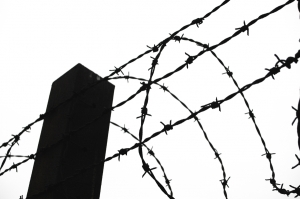Are you thinking of leaving your abusive partner, but feel overwhelmed by the practicalities of escaping – and the aftermath? Or, maybe you’re not quite ready to leave but want to be prepared just in case? Whether you’re set to get out or not – you can help yourself enormously with a safe exit plan.
Why do I need a safe exit plan?
In an abusive relationship, risk is never higher than at the point of departure. It can be the most dangerous (but hugely important) time for you and your children. Your leaving is a direct threat to your abuser’s need to control you – the most powerful challenge that there is.
According to Lees (2000), women are at greatest risk of being murdered at the point of leaving, or after separating from, a violent partner. Seven per cent of women say that the worst incident of domestic violence happened after they left their abusive partner. (Walby & Allen, 2004).
That’s why a safe exit plan is absolutely essential – whether you feel you will need it soon, or want to be prepared ‘just in case’. Even if you don’t plan to leave, you won’t regret being prepared. Even knowing that you have a plan that you could swing into action whenever you need it will be a comfort.
What goes in my plan?
Don’t write down your plan if you’re afraid of discovery, but it will help you to think about:
- Innocent reasons for you to leave the house without making him suspicious. It could be walking the dog, taking your son to a scheduled medical appointment, or a trip to the grocery store.
- Check out the Resources and Support page for links to service providers that can and will help you if you choose to go. They can provide help with housing, finances, legal aspects of separation, and emotional support. Also, think about friends or family that could help – or who may at least be able to take care of your much-loved pet.
- Put cash aside as an escape fund which you can draw on when needed.
- Teach your children how to dial emergency services – and make sure you know the number for your nearest domestic violence shelter.
- Know your abuser’s schedule and habits, so you can identify safe timeslots when you could escape.
- Identify rooms with good escape routes out of the house and where there are no items that could be used as a weapon. Try to head there if an incident is brewing.
- If you can, let a friend or relative know your situation.
- Hide spare house or car keys so you can find them if you need them in an emergency.
- Pack and hide an emergency bag.
Find out more about making a safe exit plan – also known as a safety plan – at domesticviolence.org
*** This post is adapted from an earlier post on safe exits, published on Avalanche of the Soul in December 2013. ***
Do you believe that a safe exit plan is important? Which things do you think are important to consider?
ALSO SEE: The day I left my abuser, in Cracking the eggshells forever
© Avalanche of the Soul, 2013-14
https://avalancheofthesoul.wordpress.com


This is so true. Leaving is the most dangerous.. I unfortunately know this. Great post!
LikeLiked by 1 person
Thank you Sunshine, for pointing out how dangerous it is to leave – that’s why preparation can help keep us safe.
LikeLike
Yes indeed…
LikeLiked by 1 person
I was in total denial about the abuse-I hadn’t named it. I was terrified to leave, and didn’t plan at all past arranging to have my parents pick up me and the kids while he was out one day. I wish I had realized what was happening, but I was in “blaming myself” mode. I truly thought I deserved what was being dished out.
LikeLike
I can totally relate to your experience in this, armyofangels. It was only after I got out that I had the space to analyse what had happened to me, and grasp the full extent of the abuse. I didn’t plan to leave that particular day, but having done some preparation and thinking did help me do it as safely as possible.
I’m sorry that you felt you were to blame – I know that you now know that’s entirely NOT the case. Perpetrators are responsible for their own actions, though they’d love us to believe it is our fault.
LikeLike
Excellent post – salient information and well organized. 🙂
LikeLike
Thank you Lynette
LikeLike
This is a great post Triple S….
I had no plan the first time I left……..
LikeLike
Thanks for sharing Teela 🙂
LikeLike
Essential advice for all ages in abusive relationships. Thanks for posting, it will help many.
LikeLike
Thank you, Looking for the Light. I hope it reaches someone who can benefit from it.
LikeLike
Thank you so much for this eloquent post! Important info to share!
LikeLike
Thank you so much, Running Thriver!
LikeLike